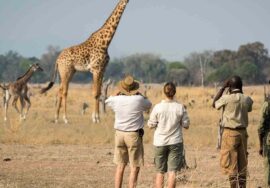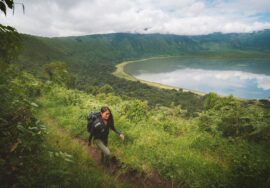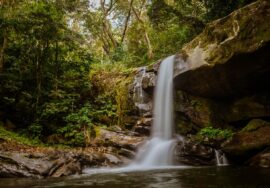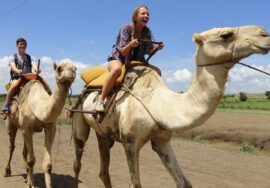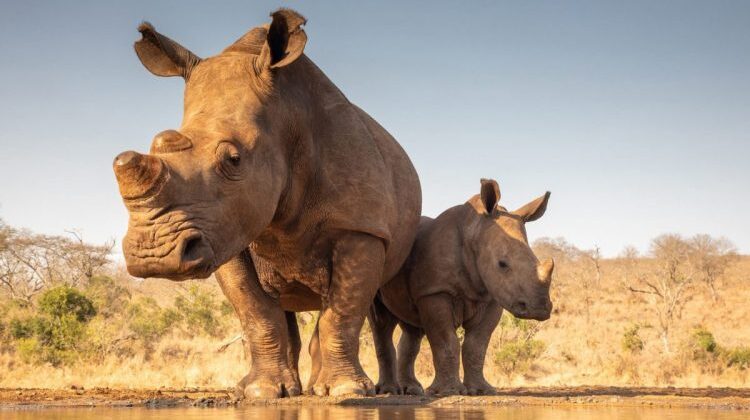
Mkomazi National Park
In northern Tanzania, Mkomazi National Park is a beautiful national park. It was formed in 1951 and was at first hard to get to because it was far away. It never got the money it needed like the other parks did. It wasn’t until 1989 that people realized how important it really was.
Today, Mkomazi National Park is very easy to get to and is a truly beautiful desert! Kilimanjaro, Africa’s tallest mountain, can be seen in the northwest. And the Pare and Usambara mountains make a dramatic background in the south. The Mkomazi National Park is next to Kenya’s Tsavo National Park in the north.
One of the biggest and most important protected environments is made up of these two parks. Elephant, oryx, and zebra groups all use them as a home base. Mkomazi is at the very end of the Sahel, in the south. A standard dry area with gray-green nyika bush, old baobab trees, and rocky hills in the middle of nowhere. In some places, the scrub seas give way to savannah woods with umbrella acacias and mbugas, which are flat grassland valleys.
The wildlife that lives in Mkomazi
Few people live in Mkomazi National Park, and the animals there are very shy. African giraffes, antelopes, small kudu, impala, and Grant’s gazelles live in dry areas. They live in the same park as elephants, cows, and many dangerous animals, such as lions, leopards, and cheetahs. And if you’re lucky, you might also see dik-diks, zebras, wildebeests, elands, and topi on a game drive. There are 78 kinds of mammals living here that people can see.
There are birds in the park.
Over 400 kinds of birds have been recorded in the park. Some of these are unique to the northern dry country, like Shelley’s starling and three-streaked tchagra. So it’s a great spot for people who like to watch birds! The park is also home to hornbills, weaver birds, guinea fowl, martial eagles, and the purple eurasian hoopoe.
Also, the vulturine guineafowl can only be seen in Mkomazi National Park, which is the only in Tanzania. The ostrich, kori bustard, secretary bird, and southern ground hornbill are all big birds that live on the open plains. Also, species that migrate, like the European roller, can be found from November to April.
Sanctuary for Mkomazi Rhinos
The Tanzanian government asked the George Adamson Wildlife Preservation Trust to work with them in 1989. As a result, the endangered black rhino was brought into the park’s Mkomazi Rhino Sanctuary, which is highly protected and fenced in.
It is very important to “protect the fortresses” during the rhino poaching disaster. To make sure that Mkomazi never has another major extinction of its rhino population, it is also important to win over the hearts and minds of the people who live there. The Prince of Wales went to Mkomazi National Park in 2012 to learn more about the protection work going on in this Tanzanian national park.
The Mkomazi Rhino Sanctuary is trying to get 50 black rhinos to breed so that they can have babies that will help the current populations in Tanzania. The rhinos in the Mkomazi Rhino Sanctuary make up almost a third of all the black rhinoceroses in Tanzania. The Mkomazi rhinos are very important for this reason, not just for the country but also for the species’ future. Prince William also went to the Mkomazi educational project in Rafiki Wa Faru while he was in Mkomazi. This is where kids from 14 nearby villages learn about rhinos and other animals so that poachers don’t kill off all the rhinos in Mkomazi again.
Time it takes to get to Mkomazi National Park
About 4.5 hours by car from Tanga
Six hours by car from Pangani
5.5 hours by car from the Usambara Mountains
Drive time of 5 hours from Kilimanjaro
Our experts have given us travel tips for Mkomazi.
I work as a guide at Mkomazi National Park and my name is Samuel. I’ve been here for 15 years. Most of our guests are amazed by how beautiful the scenery is and are thrilled to see animals. A trip to the rhino refuge is a great idea. That’s what I suggest!
How long are you staying? At least one to two days
Which hotel?
Time to go to Mkomazi National Park that is best for Babu’s Camp
The best time to see wildlife in the park is during the dry season, which lasts from June to October. But the park isn’t the best place to see wildlife, and the best time to see the mountains and beauty is during the Wet season, which lasts from November to May. Also, this is the best time to see elephants coming from Tsavo to the park.

